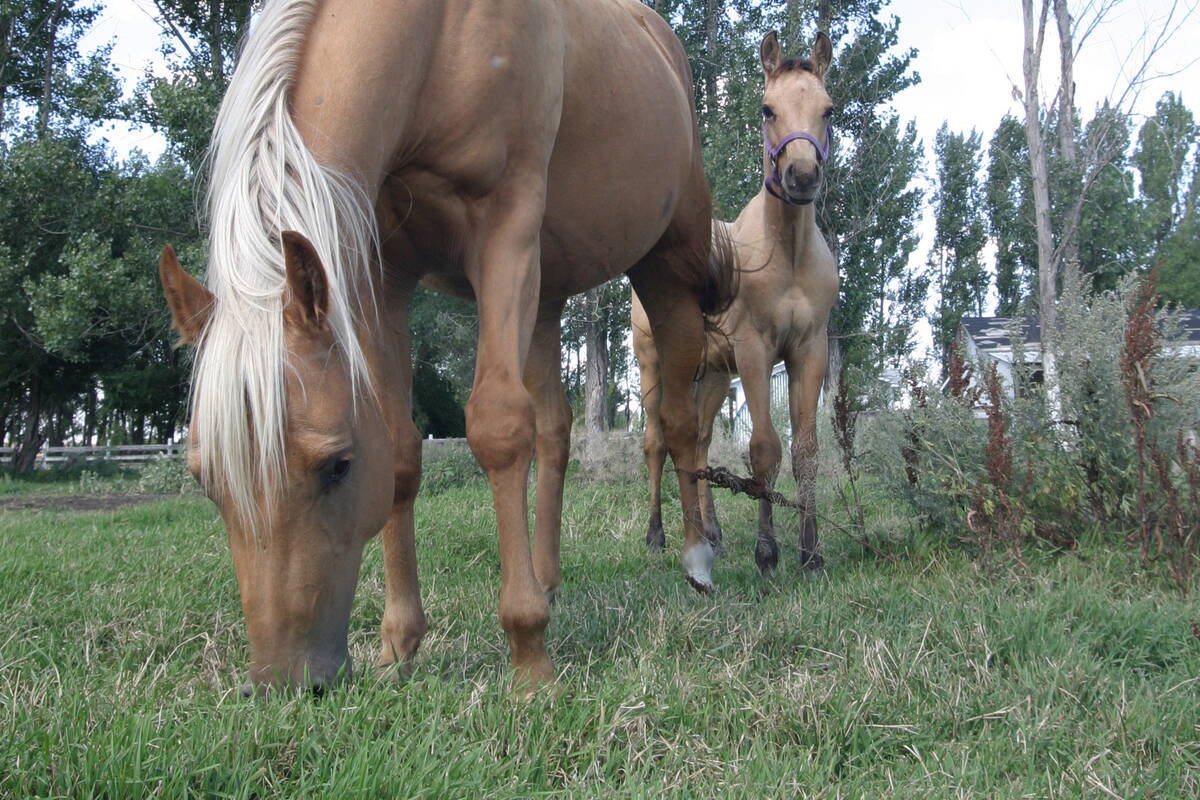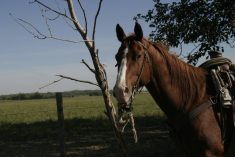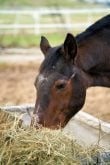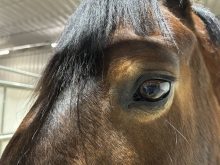Even though the ‘two-week no-grain challenge’ may be anxiety inducing, implementing it can offer surprisingly beneficial results for both horse and human.
Humans often equate food with love and unknowingly project these feelings on to their animal family — cats, dogs and horses. So this grain-free challenge, touted in some horse websites and forums, often triggers an uncomfortable emotional response. (A helpful exercise in self-discovery, if emotions arise during the challenge, would be journaling.)
However, this can be an effective way to unburden the horse’s system and allow it to heal. The practice of grain feeding is a relative newcomer along the evolutionary timeline of the horse. With the advent of sweet feed in the ’80s. the equine feed marketplace has seen a tremendous increase in grain-based and processed feed rations.
Read Also

Ignoring growth plates sabotages young horse development
Young horse training plans and workloads must match their skeletal development. Failing to plan around growth plates can create lifelong physical problems.
But there has been a concurrent rise in debilitating chronic disease states. These include, but are not limited to, obesity, insulin resistance, Cushings’ disease and/or pituitary pars intermedia dysfunction (PPID), developmental bone disease in the young animal, gastrointestinal disturbances, arthritides, compromised hoof quality and laminitis.
Just like in humans, many debilitating diseases in the horse present within a state of unresolved chronic inflammation. Therefore it is of value to identify root causes of chronic inflammation in both people and horses. Diet has been shown to be a primary source of chronic inflammation in humans and a similar dynamic is postulated to exist in the equine.
The contents of the horse’s diet deeply affects the gut microbiome, the quality and quantity of the mucous barrier lining the intestinal tract, and the health of the epithelial cells that line the intestinal tract.
One of greatest influence of the diet is upon the tight junctions which form the continuous intercellular barrier between the single layer of epithelial cells which line the vast expanse of the intestinal tract. Tight junctions regulate selective movement of substances across the gut lining. It is estimated 80 per cent of the immune system exists within the lining of the digestive tract — below these three protective barriers. When these major barriers are compromised and breached, the immune system is activated and an inflammatory response is triggered. As a result the contents of the diet have an intimate and crucial relationship with the immune system. Chronic inflammation of a dietary nature never reaches a phase of conclusion with ongoing inflammation and attempts at healing coexisting for a prolonged period of time.
The inflammatory impact of high-sugar or high-starch diets is well recognized to be problematic to the health of the horse.
As a result, feed companies have turned to replacing a portion of the grain content in the ration with fats and oils. Yet the high levels of omega-6 fatty acids found in canola, corn, and soybean oils, the rancidity associated with poorly stored high-fat feeds and the trans or partially hydrogenated content of processed oils can also trigger an inflammatory response in the horse and subsequently contribute to body-wide chronic inflammation.
The physiological response of the individual horse to processed diets so prevalent in modern-day horse keeping is highly dependent upon its biochemical makeup and lifestyle, especially the amount of movement.
Some horses can tolerate modern diets while others become debilitated by such diets. Both the quality and the quantity of the feedstuff plays a role when identifying dietary sensitivities in horses.
Although the degree to which the diet contributes to the inflammatory state of a horse can be challenging, a good starting point is to remove any grain or processed feeds. Equine feeds recognized to trigger and/or drive an inflammatory cascade include all grains and grain-based products — such as oats, barley, wheat, corn, wheat middlings, sugar beet pulp, rice and wheat bran, oat hulls, sweet feeds, all processed or bagged feeds AND treats. Therefore, for the purpose of the challenge removal of all these products from the diet is necessary.
Mark two weeks off on a calendar. Feed only quality grass or hay and free-choice salt, mineral and fresh water for the duration of two weeks.
No weaning period is necessary. Record all observations about the horse, including physical and behavioural findings, as these observations can prove to be valuable information for reflection and decision-making.
Although certain horses may go through a type of withdrawal at feeding time, it will pass within three days. Differences in particularly sensitive horses can be noted within three days. Depending on the horse, the changes during the challenge can be remarkably insightful.
As a whole, the mind and body of the horse become calmer and quieter. Some horses change a little and some horses change a lot. Either way the information gathered is valuable insight and can be a part of making meaningful changes to improve the horse’s way of life in an unexpected way.
When well understood, the ‘right’ food — or removal of the ‘wrong’ food — can indeed equate with love.
















